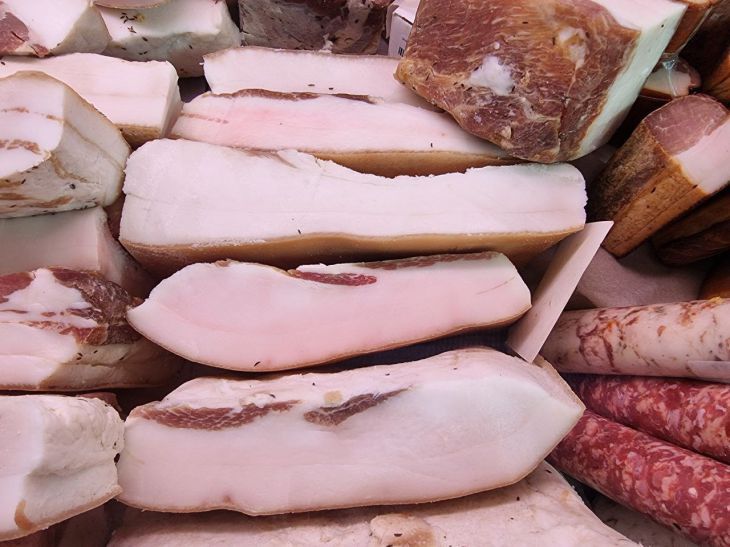Many people understand perfectly well that the most delicious lard can be found at the market. But how can you tell that the lard is tasty and fresh?
There are several signs you should pay attention to.
Appearance
The first thing you should pay attention to is the appearance of the lard.
High-quality lard should be white or slightly pinkish in color.
A yellow or grey tint may indicate that the product is old.

The thickness of the lard also plays a role: the ideal layer should be uniform and not too thin.
Smell
The fresh product has a pleasant, slightly sweet aroma.
If the lard has an unpleasant or sour smell, it is better to refuse to buy it, as this may indicate spoilage.
Market vendors often give you the opportunity to smell the product before purchasing, so you definitely shouldn't miss this opportunity.
Texture and density
A quality product should be elastic but soft to the touch.
If the lard is too hard or, on the contrary, too soft and falls apart under your fingers, this may indicate improper storage or poor quality of the original raw material.
Presence of meat
Sometimes you can find layers of meat in lard. This not only adds to the taste, but is also an indicator of freshness.
The meat layers should be pink and have a fresh appearance.
If the meat is dark or has an unpleasant smell, you should avoid purchasing it.
Storage conditions on the market
It is equally important to pay attention to the storage conditions of lard at the market.
The product must be kept in clean conditions, away from direct sunlight.
The optimal storage temperature for lard is about 0 °C. If it is stored on open shelves at high temperatures, it is better not to take risks.
Seller's reputation
Regular customers often share their reviews and recommendations, so it is worth listening to the opinions of experienced gourmets.
Sellers who value their reputation will always offer a quality product and give you the opportunity to try it.
Signs of counterfeit cheese were previously identified.








